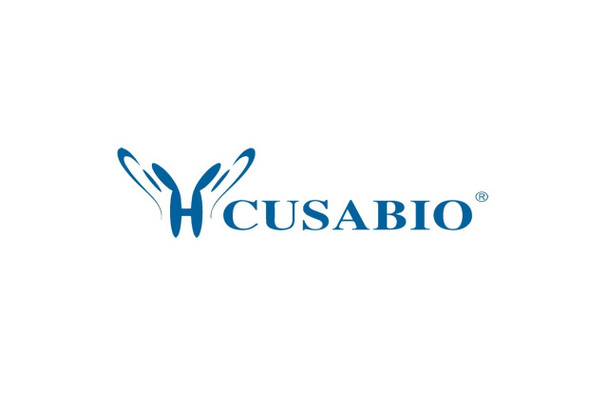Cusabio Mouse Recombinants
Recombinant Mouse Scavenger receptor cysteine-rich type 1 protein M130 (Cd163) , partial | CSB-EP650452MO
- SKU:
- CSB-EP650452MO
- Availability:
- 3 - 7 Working Days
Description
Recombinant Mouse Scavenger receptor cysteine-rich type 1 protein M130 (Cd163) , partial | CSB-EP650452MO | Cusabio
Alternative Name(s): CD163
Gene Names: Cd163
Research Areas: Others
Organism: Mus musculus (Mouse)
AA Sequence: VVCQQLGCPTSIKALGWANSSAGSGYIWMDKVSCTGNESALWDCKHDGWGKHNCTHEKDAGVTCSDGSNLEMRLVNSAGHRCLGRVEIKFQGKWGTVCDDNFSKDHASVICKQLGCGSAISFSGSAKLGAGSGPIWLDDLACNGNESALWDCKHRGWGKHNCDHAEDVGVICLEGADLSLRLVDGVSRCSGRLEVRFQGEWGTVCDDNWDLRDASVVCKQLGCPTAISAIGRVNASEGSGQIWLDNISCEGHEATLWECKHQEWGKHYCHHREDAGVTCS
Source: E.coli
Tag Info: N-terminal 6xHis-tagged
Expression Region: 86-365aa
Sequence Info: Partial
MW: 34.2 kDa
Purity: Greater than 90% as determined by SDS-PAGE.
Relevance: Involved in clearance and endocytosis of hoglobin/haptoglobin complexes by macrophages and may thereby protect tissues from free hoglobin-mediated oxidative damage. May play a role in the uptake and recycling of iron, via endocytosis of hoglobin/haptoglobin and subsequent breakdown of he. Binds hoglobin/haptoglobin complexes in a calcium-dependent and pH-dependent manner. Induces a cascade of intracellular signals that involves tyrosine kinase-dependent calcium mobilization, inositol triphosphate production and secretion of IL6 and CSF1 .After shedding, the soluble form (sCD163) may play an anti-inflammatory role.
Reference: Molecular cloning and characterization of the mouse CD163 homologue, a highly glucocorticoid-inducible member of the scavenger receptor cysteine-rich family.Schaer D.J., Boretti F.S., Hongegger A., Poehler D., Linnscheid P., Staege H., Mueller C., Schoedon G., Schaffner A.Immunogenetics 53:170-177(2001)
Storage: The shelf life is related to many factors, storage state, buffer ingredients, storage temperature and the stability of the protein itself. Generally, the shelf life of liquid form is 6 months at -20?/-80?. The shelf life of lyophilized form is 12 months at -20?/-80?.
Notes: Repeated freezing and thawing is not recommended. Store working aliquots at 4? for up to one week.
Function: Involved in clearance and endocytosis of hemoglobin/haptoglobin complexes by macrophages and may thereby protect tissues from free hemoglobin-mediated oxidative damage. May play a role in the uptake and recycling of iron, via endocytosis of hemoglobin/haptoglobin and subsequent breakdown of heme. Binds hemoglobin/haptoglobin complexes in a calcium-dependent and pH-dependent manner. Induces a cascade of intracellular signals that involves tyrosine kinase-dependent calcium mobilization, inositol triphosphate production and secretion of IL6 and CSF1 (By similarity).
Involvement in disease:
Subcellular Location: Soluble CD163: Secreted, SUBCELLULAR LOCATION: Cell membrane, Single-pass type I membrane protein
Protein Families:
Tissue Specificity: Expressed in monocytes and mature macrophages such as Kupffer cells in the liver, red pulp macrophages in the spleen and mesenteric lymph nodes.
Paythway:
Form: Liquid or Lyophilized powder
Buffer: If the delivery form is liquid, the default storage buffer is Tris/PBS-based buffer, 5%-50% glycerol. If the delivery form is lyophilized powder, the buffer before lyophilization is Tris/PBS-based buffer, 6% Trehalose, pH 8.0.
Reconstitution: We recommend that this vial be briefly centrifuged prior to opening to bring the contents to the bottom. Please reconstitute protein in deionized sterile water to a concentration of 0.1-1.0 mg/mL.We recommend to add 5-50% of glycerol (final concentration) and aliquot for long-term storage at -20?/-80?. Our default final concentration of glycerol is 50%. Customers could use it as reference.
Uniprot ID: Q2VLH6
HGNC Database Link: N/A
UniGene Database Link: UniGene
KEGG Database Link: KEGG
STRING Database Link: STRING
OMIM Database Link: N/A









